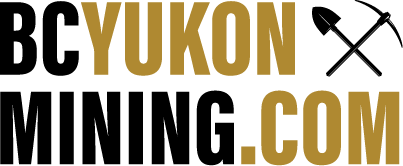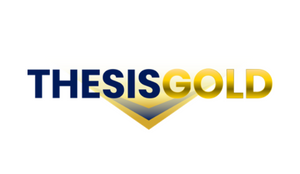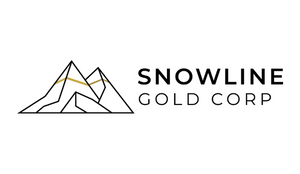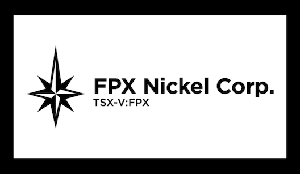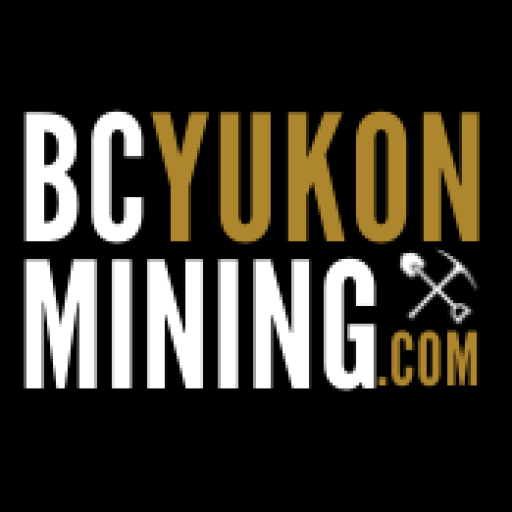| WESTERN COPPER AND GOLD ANNOUNCES POSITIVE PEA ON CASINO $2.3 billion After-Tax NPV (8%) at Base Case metal prices After-Tax IRR 19.5% at Base Case metal prices Cashflow over the first four years of $965 million per year at Base Case metal prices Base case development contemplates 25-year mine life Extended Two-Phase development contemplates a 47-year mine life Base Case metal prices: Cu: US$3.35/lb, Au: US$1,600/oz, Ag: US$24/oz, Mo: US$12/lb VANCOUVER, B.C. Western Copper and Gold Corporation (“Western” or the “Company”) (TSX:WRN; NYSE American:WRN) is pleased to release the results of its Preliminary Economic Assessment (the “PEA”, or “Study”) on its wholly-owned Casino copper-gold-molybdenum deposit in the Yukon (“Casino” or the “Project”). The Study considered the Project being constructed as an open pit mine, with a concentrator processing nominally 120,000 tonnes per day and a gold heap leach facility processing nominally 25,000 tonnes per day. The Study supersedes all previous studies and incorporates the updated mineral resource with an effective date of July 3, 2020. The Study also incorporates outcomes of the Best Available Tailings Technology Study (the “BATT Study”) completed in 2018 with participation by First Nations, the Yukon Environmental and Socio-economic Assessment Board (“YESAB”) and the Yukon Government. The design concept for the tailings management facility (“TMF”) also reflects the guidance received from the Independent Engineering Review Panel. The Study examines the development of the Casino Project, which comprises the processing of 1.3 billion tonnes of mineralized material for both the mill and heap leach, with deposition of mill tailings and mine waste in the TMF facility consistent with the design concepts considered during the BATT Study as a base case development. “I am extremely pleased with the results from this PEA”, said Paul West-Sells, President & Chief Executive Officer. “This Study reaffirms Casino as one of the very few long-life copper-gold projects with robust economics in a top mining district, the Yukon. We look forward to continuing working with our recent strategic investor, Rio Tinto, First Nations and other stakeholders to advance this project through additional engineering to feasibility.” In this news release, unless otherwise indicated, all further references to “$” are to Canadian dollars and references to “US$” are to United States dollars. HIGHLIGHTS |
 |
| Base Case metal prices: Cu: US$3.35/lb, Au: US$1,600/oz, Ag: US$24/oz, Mo: US$12/lb. KEY CHANGES FROM THE PREVIOUS STUDY The engineering design basis for this PEA is similar in most respects to earlier studies but includes several significant design improvements. The major changes include: Tailings Management Facility The TMF is sized to provide sufficient capacity to store approximately 712 Mt of tailings and 500 Mt of mining waste rock and overburden materials. The remaining 415 Mt of non-acid generating (“NAG”) tailings will be used for dam construction following classification with hydrocyclones and dewatering screens. The TMF for the PEA includes design changes based on the recommendations from the BATT Study. The key changes to the TMF design concept include: Substantial reduction in the quantity of free-standing water impounded during operations and a corresponding reduction of risk associated with this facility.Closure by saturated NAG tailings cover limiting the need for a flooded cover.A tailings dewatering facility to conserve additional coarse sand material for dam construction. Surplus sand produced through cycloning and screening operations will be used to buttress the downstream slopes of the main embankment.Changes to the design of the starter dam to reduce construction risk. Added a HDS water treatment facility to provide mitigation for potential water surplus conditions, However, surplus water is not expected under design operating conditions. Updated Mineral Resource The updated mineral resource, released in July 2020, was used as the basis of the PEA. For the purposes of the Study, only the measured and indicated mineral resources were considered as mill or heap leach feed. Inferred mineral resources in the pit are considered to be waste as there are limited inferred mineral resources in the designed pit. Note that the Study reports on mineral resources, not mineral reserves. Mineral resources that are not mineral reserves do not have demonstrated economic viability. Heap Leach Gold Recovery New column testing on various lithology samples representing the feed to the heap leach indicated that the gold recovery in the heap leach could be increased from 66% to 70%. Access Road Costing for the access road was adjusted to incorporate the commitment from the Yukon and Federal government to fund portions of the access road. More detail can be found in the Western news release dated September 5, 2017. Airstrip The proposed airstrip has been relocated along the access road to limit the potential impact on caribou habitat. FINANCIAL RESULTS The Study indicates that the potential economic returns from the Project justify its further development and securing the required permits and licenses for operation. The financial results of the Study were developed under commodity prices that were based on analyst projections of long-term metal prices and CAN$:US$ exchange rate (“Base Case” prices). Note that an exchange rate of CAN$:US$ of 0.80 was used for the capital cost estimation for all metal price scenarios. The following table summarizes the financial results: |
 |
| *C1 cash costs, net of by-product credits. The financial results of the Study are significantly influenced by copper and gold prices, as is shown in the tables below: |
 |
 |
| *All other metal prices except those noted are the same as the Base Case. Higher grade material is fed to the concentrator during the first four years of the concentrator operation. This factor, combined with the concurrent heap leach facility operation, results in higher yearly cash flows and other metrics during this period and contributes significantly to the Project’s financial performance. |
 |
| CAPITAL COSTS Total initial capital investment in the Project is estimated to be $3.25 billion, which represents the total direct and indirect cost for the complete development of the Project, including associated infrastructure and power plant. The following table shows how the initial capital is distributed between the various components. |
 |
| OPERATING COSTS Operating costs for the milling operation were calculated per tonne of material processed through the mill over the life of mine: |
 |
| Heap leach operating costs were calculated per tonne of material processed through the heap leach over the life of the heap leach. |
 |
| Mining costs were calculated to average $1.93 per tonne of material moved and $3.10 per tonne of mineralized material. |
 |
| The combined mining and milling costs are $9.84 per tonne material milled for the life of mine, which compares favorably to the life-of-mine net smelter return of $28.14 per tonne at Base Case metal prices. DEVELOPMENT PLAN The Study evaluates the development of the Casino deposit as a conventional open pit mine, concentrator complex, and heap leach operation. The initial production will focus on the deposit’s oxide cap as a heap leach operation to recover gold and silver in doré form. The main sulphide deposit will be processed using a conventional concentrator to produce copper-gold-silver and molybdenum concentrates. Key metrics of the processing plant are shown below: |
 |
| *Heap leach first four years grades taken from the start of the heap leach. INFRASTRUCTURE A new 132-km all-weather access road will be developed, extending from the end of the existing Freegold Road and generally following the alignment of the existing “Casino Trail” to the mine site. The Study contemplated that concentrates will be transported, stored and loaded on ships via upgraded facilities provided by the Port of Skagway, Alaska. The Project operating cost estimate includes the anticipated concentrate handling service charges based on use of the upgraded facilities. SECOND PHASE DEVELOPMENT The Study also examined extending the operation after treating the first 1.3 billion tonnes of mineralized material (Phase I) for approximately 25 years (Phase II) for a total life-of-mine of 47 years. The extended operation is achieved using the original concentrator and associated infrastructure at the same nominal processing rate of 120,000 tonnes per day. An additional 1 billion tonnes of mineralized material would be processed by the mill during the extended operation. A secondary TMF would be constructed downstream of the original TMF to accommodate the additional tailings and waste rock associated with extended operations. The indicative capital requirements and economic performance indicators for the extended operations scenario is as shown below. As this table shows, the differences between Phase I capital costs and the combined Phase I + Phase II capital costs are the additional sustaining capital to construct the secondary TMF facility and the mine equipment required to support the Project through the additional years of mine life. |
 |
| The net present value and internal rate of return for developing the two-phase project are not significantly different from those for developing the single-phase project, however, the life-of-mine and life-of-mine cash flow increase significantly. Highlights from developing the Phase I + II development at Base Case metal prices are shown below: |
 |
| *Based on Base Case metal prices: Cu: US$3.35/lb, Au: US$1,600/oz, Ag: US$24/oz, Mo: US$12/lb STAKEHOLDER ENGAGEMENT The Project is located within the traditional territory of Selkirk First Nation. Aspects of the Project impact the traditional territories of the Little Salmon/Carmacks First Nation, Tr’ondëk Hwëch’in, Kluane First Nation and White River First Nation. The nearest communities are the Village of Carmacks and Pelly Crossing, and the Project is 200 km upstream of Dawson City along the Yukon River. Western is committed to developing and operating the Project in a safe, ethical and socially responsible manner. Western has been consulting extensively on the Project since 2008, and First Nations and their technical advisors have participated directly in the refinement of the tailings and mine waste strategy at the Project, as reflected in the design presented in the PEA. Since 2006, Western has spent over $75 Million in Yukon advancing the Project, working with over 50 different Yukon and First Nations joint venture companies. Western is active in the local community, with longstanding support and sponsorship of over 30 local organizations and charities. As the Project is further refined, Western will continue to seek feedback from and partnerships with local First Nations and communities and is committed to developing the Project with First Nations’ and local community input. LOOKING FORWARD Based on the positive results of the Study, Western plans to advance the Project to establish a mineral reserve estimate for the Project with the ultimate objective of submitting an application for environmental assessment under the Yukon Environmental and Socioeconomic Assessment Act, the first step in the permitting process. CONFERENCE CALL Western will hold a conference call and webcast on Tuesday, June 22, 2021 at 8 am Pacific Time (11 am Eastern Time) to discuss the Study. Webcast access: http://services.choruscall.ca/links/westerncopperandgold20210622.html Telephone access: Vancouver local and International 1-604-638-5340 Toll Free North America:1-800-319-4610 An archived recording of the conference call will be available by dialing 1-604-638-9010 or 1-800-319-6413 within North America, passcode is 7194. The webcast and presentation slides will be archived on the Company’s website www.westerncopperandgold.com. TECHNICAL REPORT & QUALIFIED PERSONS M3 Engineering & Technology Corporation (“M3″), a full-service Engineering, Procurement, Construction & Management firm, is recognized for its experience in copper processing and capabilities in the development and construction of mines and mineral processing plants. A National Instrument 43-101 (NI 43-101) compliant technical report prepared by the following Qualified Persons will be posted on the Company’s website (www.westerncopperandgold.com) as well as on SEDAR (www.sedar.com), and on EDGAR within 45 days: Daniel Roth, P.Eng. of M3 – Overall scientific and technical information, with a focus on project infrastructure, capital costs, and the economic analysis.Laurie Tahija, MMSA-QP, of M3 – Metallurgy, recovery methods, and process operating costs.Michael G. Hester, F Aus IMM, of Independent Mining Consultants – Resource estimation, mining methods and mining costs.Carl Schulze, P.Geo., of Aurora Geosciences – History, geology, exploration, drilling, and sampling.Caroline J. Vallat, P.Geo., of GeoSpark Consulting Inc. – Data verification.Daniel Friedman, P.Eng., of Knight Piésold Ltd. – Tailings and heap leach facilities. The Qualified Persons have reviewed and approved the scientific, technical, and economic information contained in this news release. ABOUT WESTERN COPPER AND GOLD CORPORATION Western Copper and Gold Corporation is developing the Casino Project, Canada’s premier copper-gold mine in the Yukon Territory and one of the most economic greenfield copper-gold mining projects in the world. For more information, visit www.westerncopperandgold.com. |
